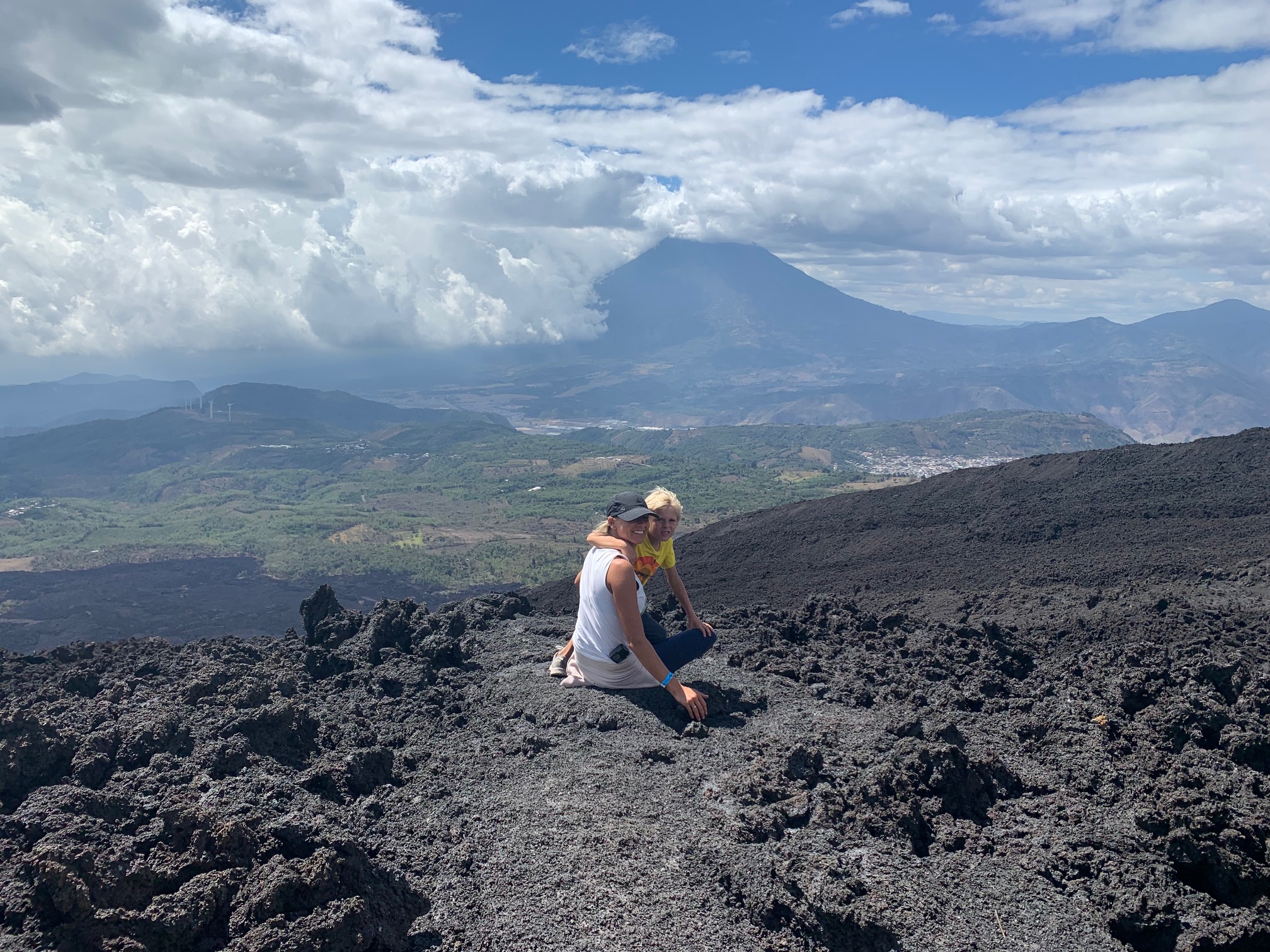50 Amazing Facts about Guatemala

When we started our travels in 2021, we had. different idea of Guatemala, but once we explored it, we have concluded that it was one of the most amazing and most beautiful countries we visited. We loved the local culture, local people, the various attractions and landscapes it had, we loved everything about it.



Here we are sharing 50 fascinating facts about Guatemala:
- Mayan Heritage: Guatemala was the heartland of the ancient Mayan civilization, with famous sites like Tikal and El Mirador.
- Independence: Guatemala gained independence from Spain on September 15, 1821.
- Geography: It has diverse landscapes, including volcanoes, rainforests, and coastlines on both the Pacific Ocean and the Caribbean Sea.
- Volcanoes: Guatemala has 37 volcanoes, three of which are active: Fuego, Pacaya, and Santiaguito.
- Tikal: The ancient city of Tikal is a UNESCO World Heritage Site and one of the largest archaeological sites of the pre-Columbian Maya civilization.
- Quetzal: The national bird, the resplendent quetzal, is also the name of the country’s currency.
- Antigua Guatemala: This colonial city, a UNESCO World Heritage Site, is famous for its well-preserved Spanish Baroque-influenced architecture.
- Lake Atitlán: Known for its beauty, this lake is surrounded by volcanoes and traditional Mayan villages.
- Chocolate: The Maya were among the first people to cultivate cacao and make chocolate.
- Rigoberta Menchú: She is a Nobel Peace Prize laureate (1992) known for her work in promoting indigenous rights in Guatemala.
- Textiles: Guatemalan textiles, especially those made by the indigenous Maya, are renowned for their vibrant colors and intricate patterns.
- Population: Over 40% of the population is of indigenous Maya descent.
- Language: While Spanish is the official language, there are 21 distinct Mayan languages spoken in the country.
- Semana Santa: The Holy Week in Antigua Guatemala is one of the most famous and elaborate Easter celebrations in the world.
- Biodiversity: Guatemala is one of the world’s biodiversity hotspots, home to many unique species of plants and animals.
- Coffee: Guatemalan coffee is world-renowned for its rich flavor and high quality.
- Climate Zones: Despite its small size, Guatemala has 14 distinct climate zones.
- El Mirador: Home to the largest pyramid in the world by volume, the La Danta pyramid.
- Colonial Architecture: Cities like Antigua are famous for their beautiful colonial buildings and ruins.
- Traditional Cuisine: Guatemala’s traditional dishes include tamales, pepian, and kak’ik, reflecting a blend of indigenous and Spanish influences.
- Civil War: The country endured a brutal civil war from 1960 to 1996, which had significant impacts on its society.
- Natural Disasters: Guatemala is prone to earthquakes and volcanic eruptions due to its location on the Pacific Ring of Fire.
- Chichicastenango Market: This highland town hosts one of the largest and most colorful markets in Latin America.
- Conservation Efforts: Guatemala has numerous protected areas and national parks to preserve its natural heritage.
- Mayan Calendar: The Mayan calendar, with its sophisticated understanding of astronomy, originated here.
- Cultural Festivals: The country hosts numerous festivals celebrating its indigenous and colonial heritage.
- Coffea Arabica: The highlands of Guatemala are ideal for growing this high-quality coffee variety.
- Maya Biosphere Reserve: This is the largest protected area in Central America.
- Syncretism: The blending of indigenous and Catholic religious practices is common in Guatemala.
- Sculpture and Pottery: The ancient Maya were masters of these arts, with many artifacts found in Guatemala.
- River Caves: The Lanquín caves and the Semuc Champey natural monument are notable geological formations.
- Political Instability: Guatemala has experienced numerous coups and political upheavals throughout its history.
- Education: Literacy rates have been improving, but education access remains a challenge in rural areas.
- Economy: Agriculture, textiles, and tourism are major contributors to the Guatemalan economy.
- Giant Kite Festival: Celebrated on All Saints Day, huge kites are flown in the town of Sumpango.
- Sports: Football (soccer) is the most popular sport in Guatemala.
- Garifuna Culture: The Garifuna people, descendants of African and indigenous Carib populations, have a unique culture along the Caribbean coast.
- Folk Music: Marimba music is an integral part of Guatemalan culture.
- Population Growth: Guatemala has one of the highest population growth rates in Latin America.
- UNESCO Sites: Besides Tikal and Antigua, Guatemala has other UNESCO-recognized heritage sites.
- Mayan Textiles: Traditional Mayan weaving techniques are still practiced and taught.
- Street Food: Popular street foods include chuchitos (a type of tamale) and dobladas.
- Bilingual Education: Efforts are being made to provide bilingual education in Spanish and indigenous languages.
- Literature: Guatemalan literature has been influenced by both indigenous and colonial history.
- Historical Conflicts: The country’s history includes conflicts such as the Spanish conquest and the Banana Wars.
- Flora and Fauna: Guatemala is home to rare species like the jaguar and the scarlet macaw.
- La Aurora Zoo: One of the best zoos in Central America, located in Guatemala City.
- Traditional Dance: The Dance of the Deer is a famous traditional Guatemalan dance.
- Medical Herbs: Traditional medicine using native plants is still common in rural areas.
- Guatemalan Art: Influenced by its rich history and cultural diversity, contemporary Guatemalan art is vibrant and varied.
These facts highlight the rich cultural, historical, and natural tapestry that makes Guatemala a unique and fascinating country.